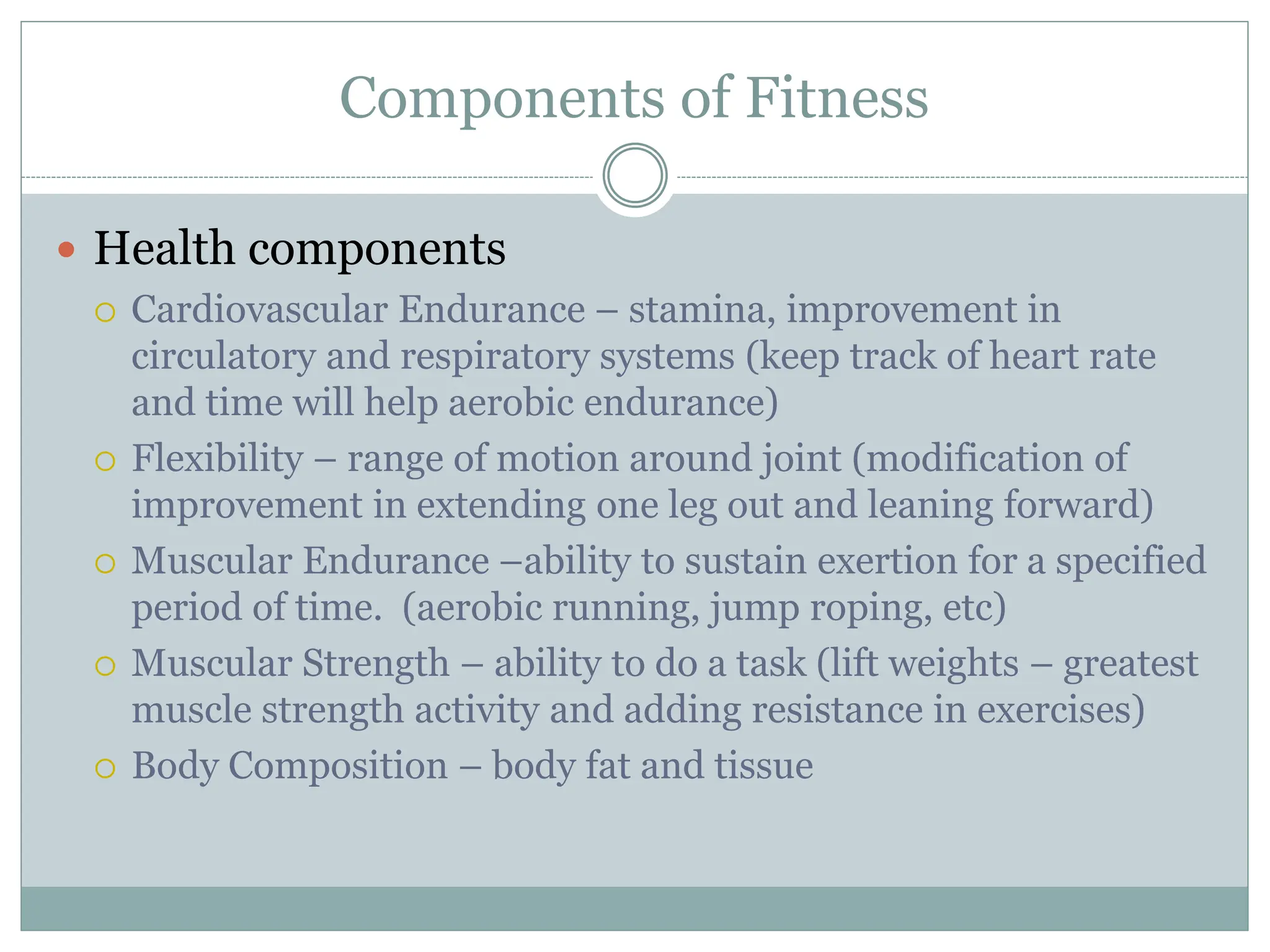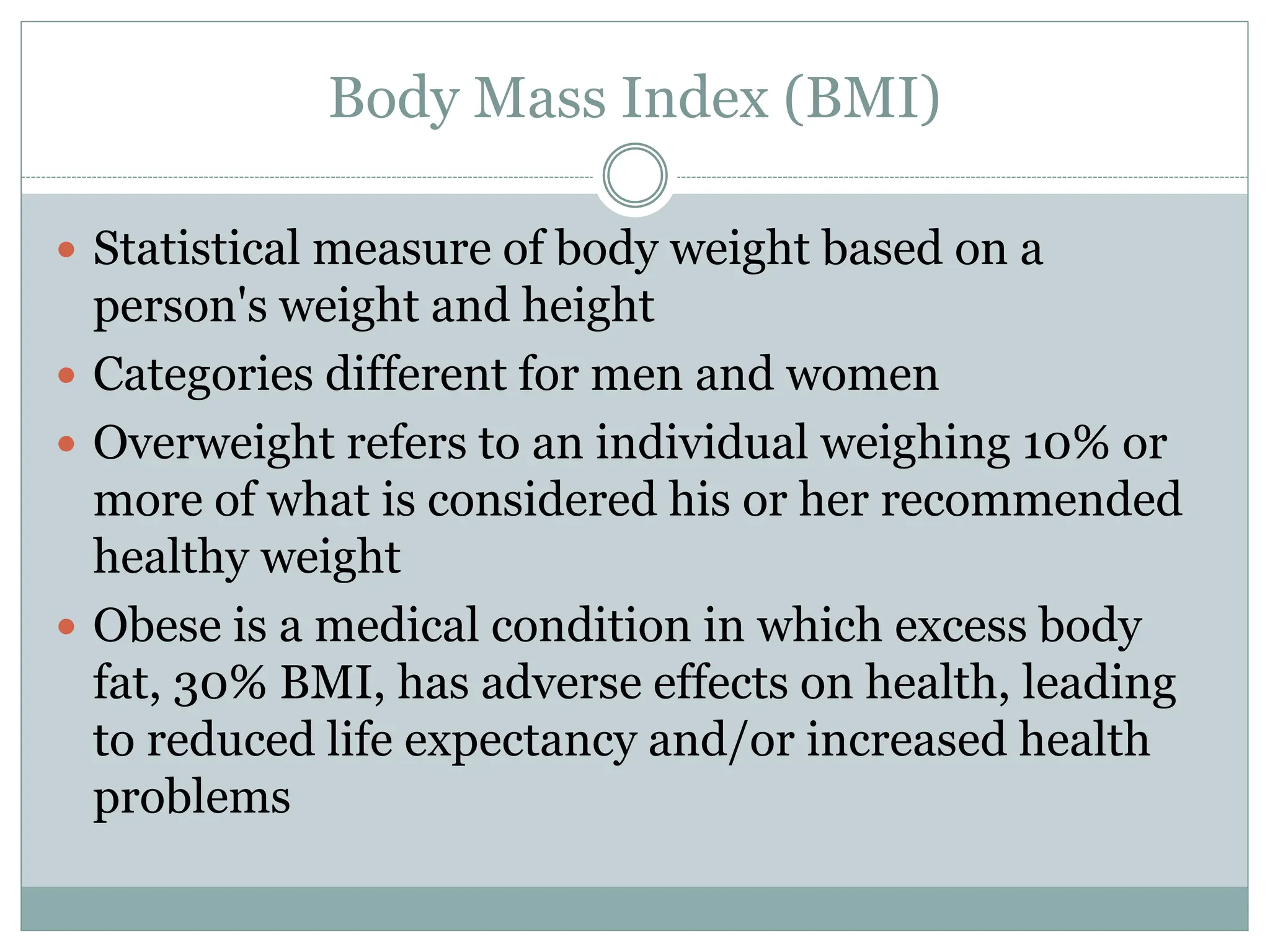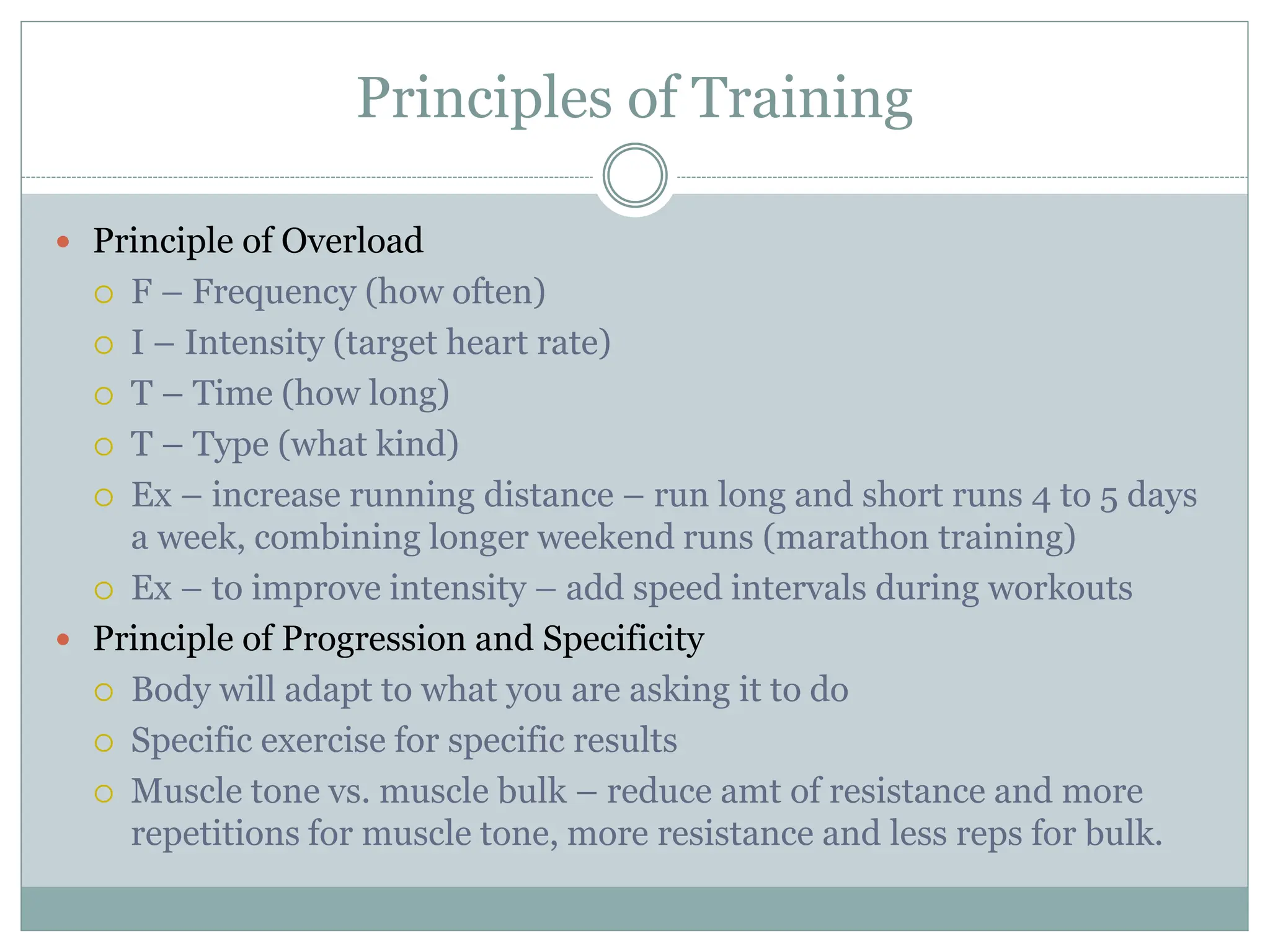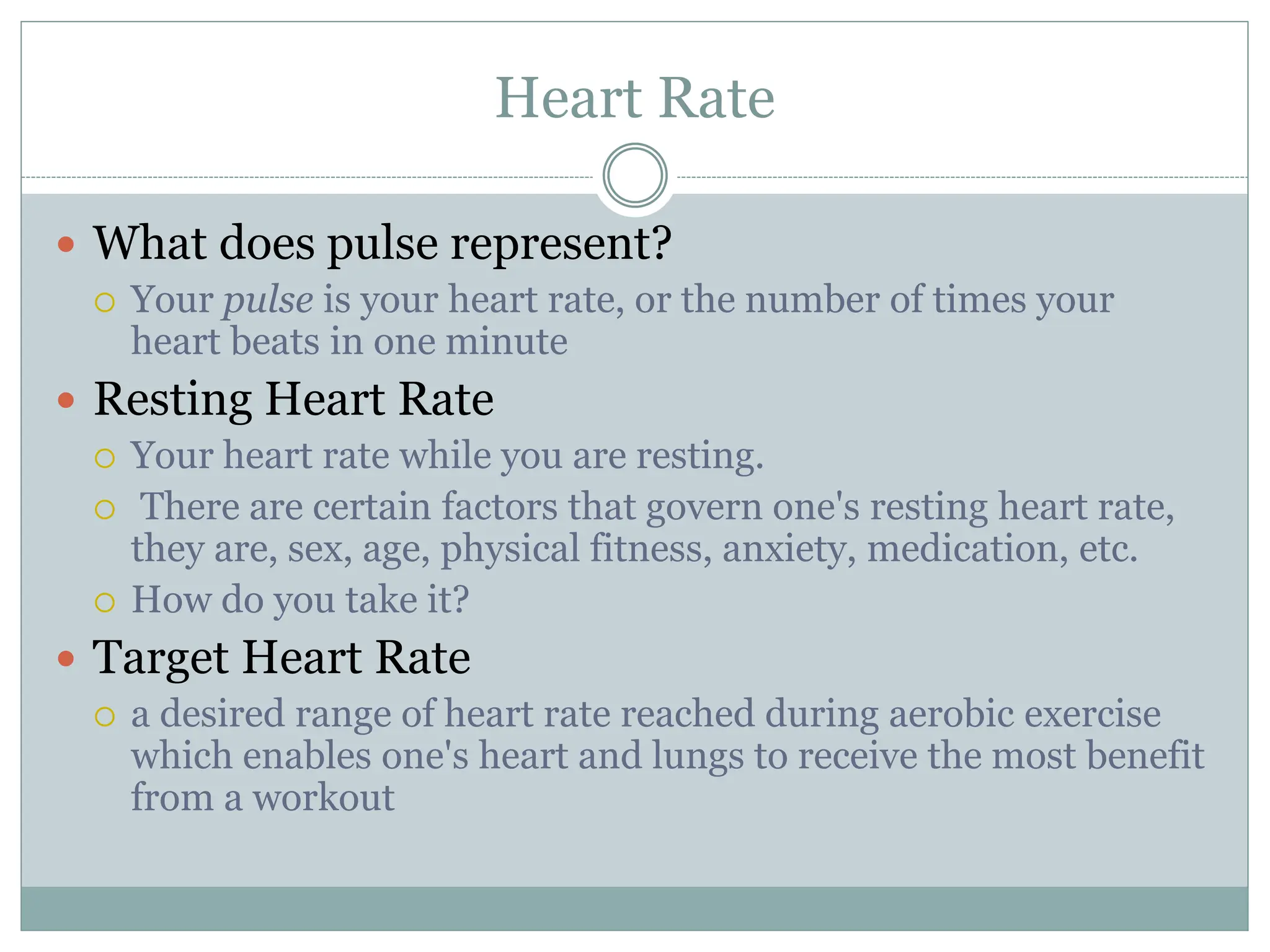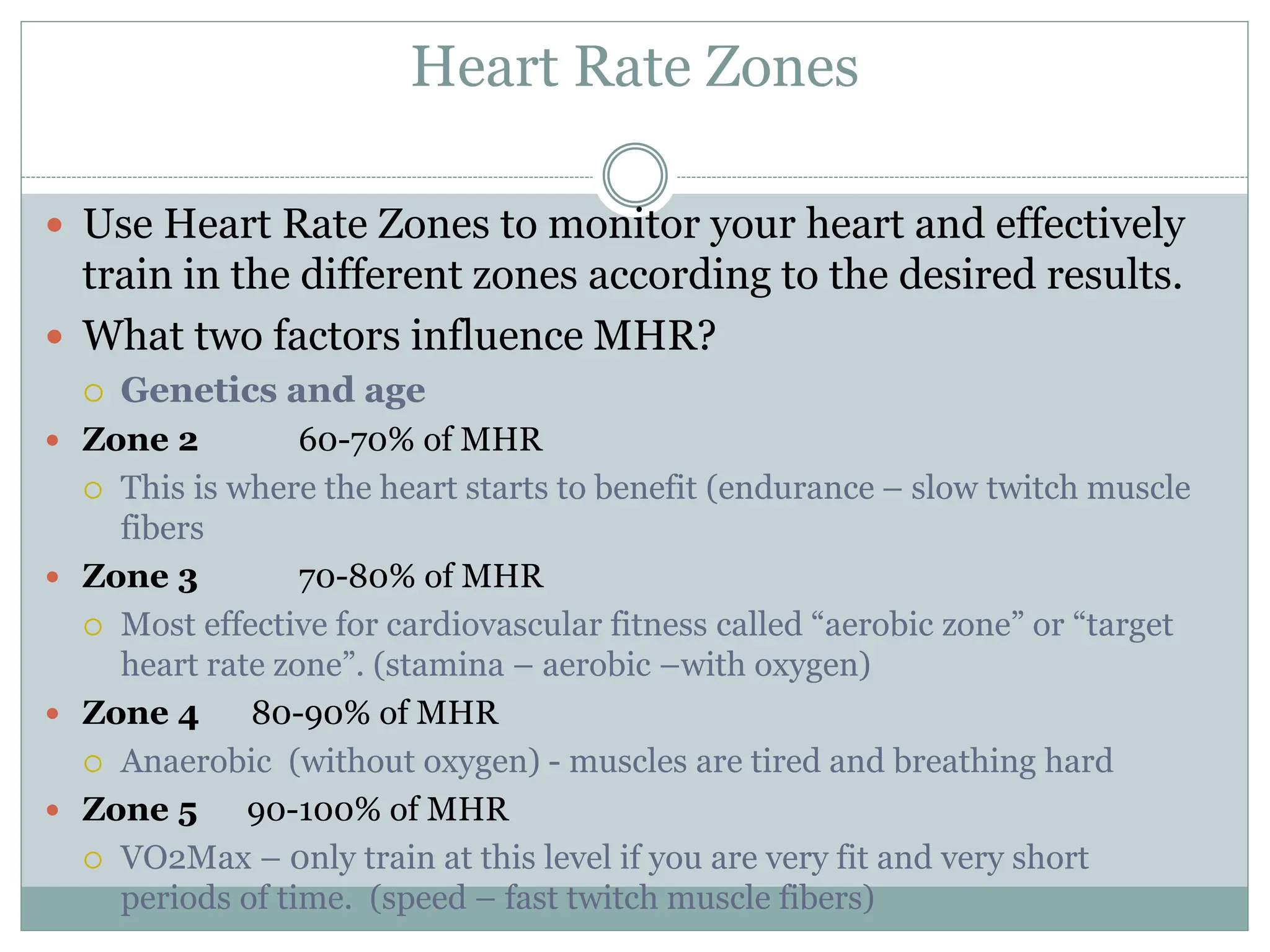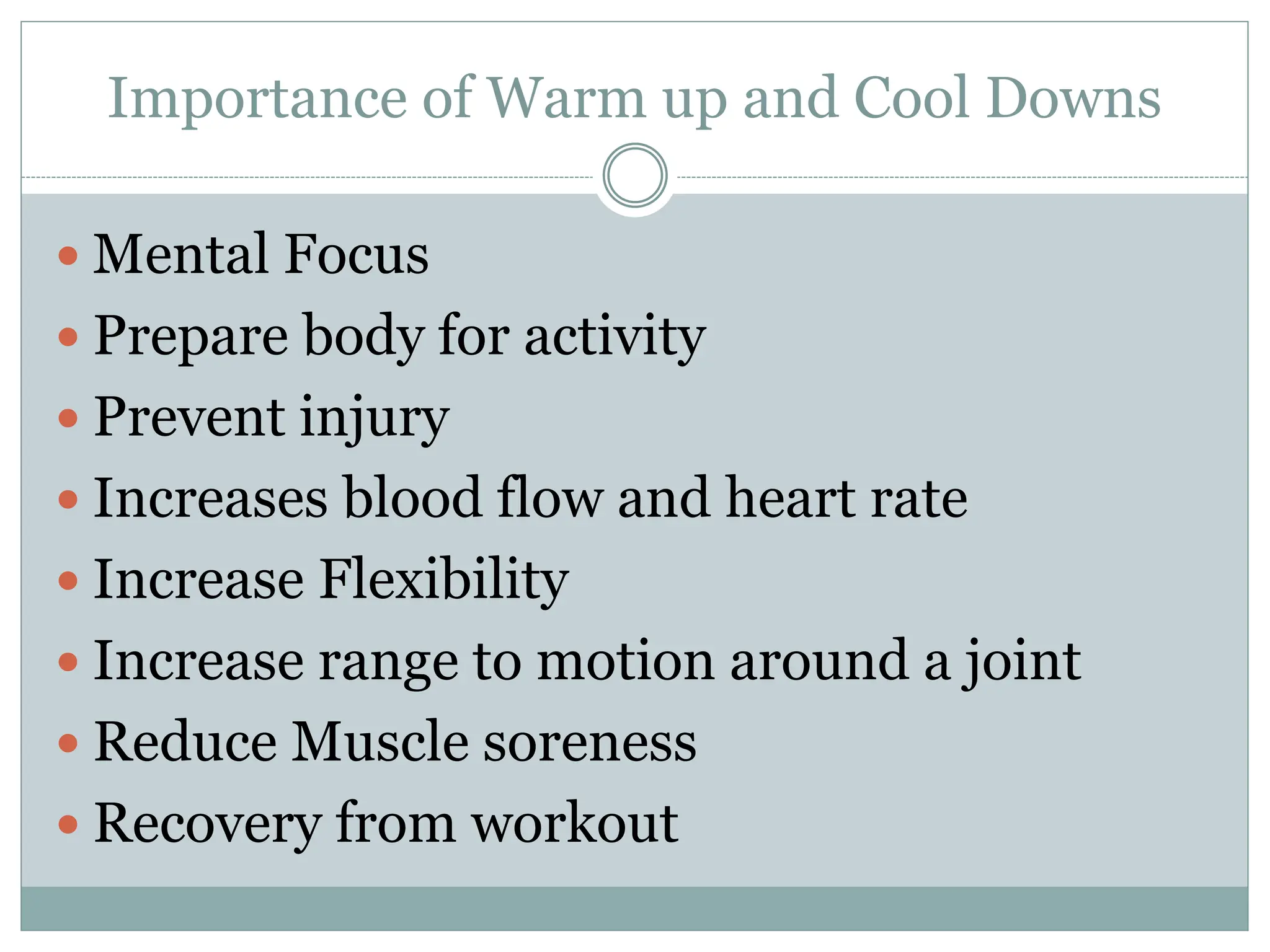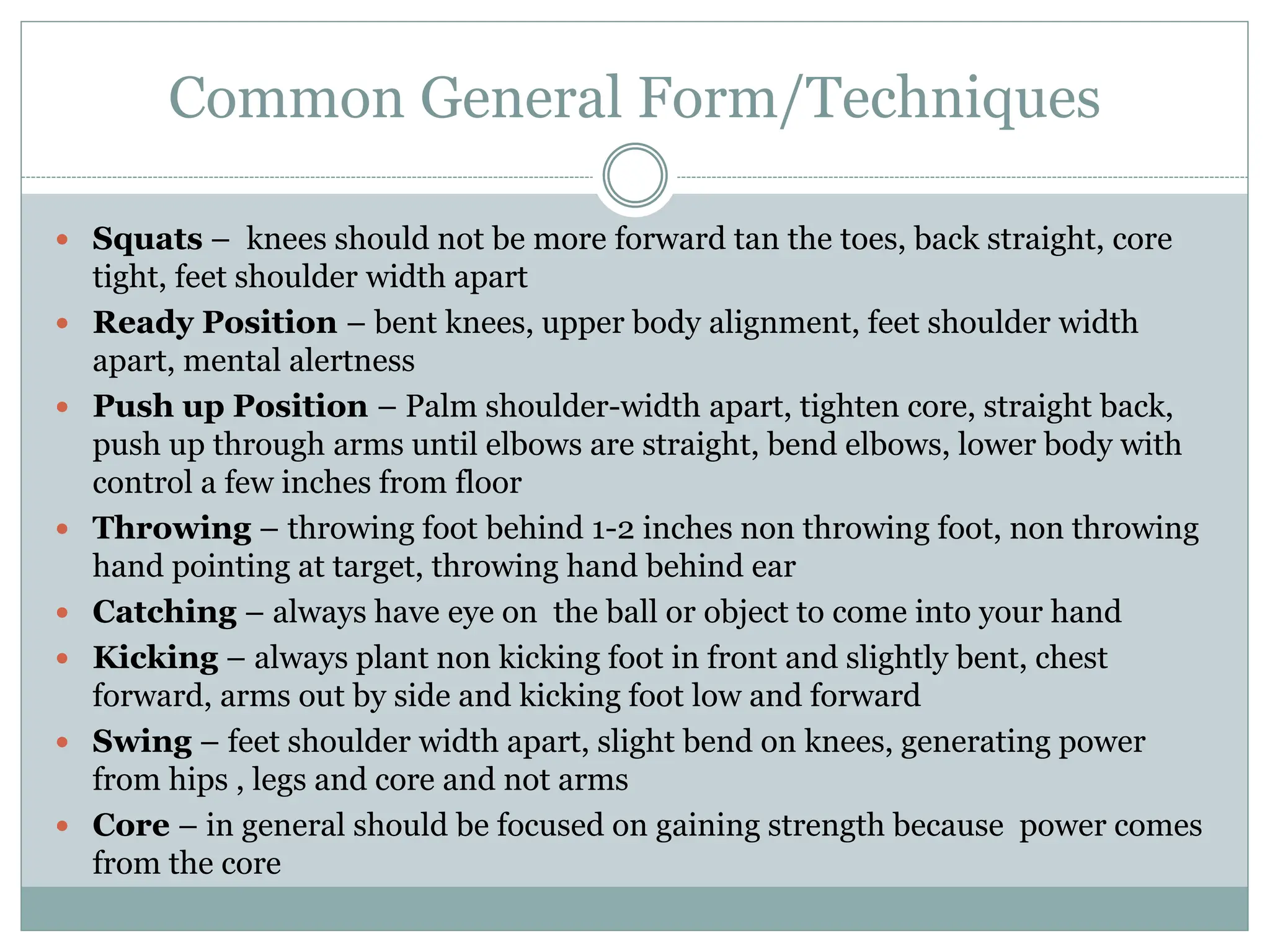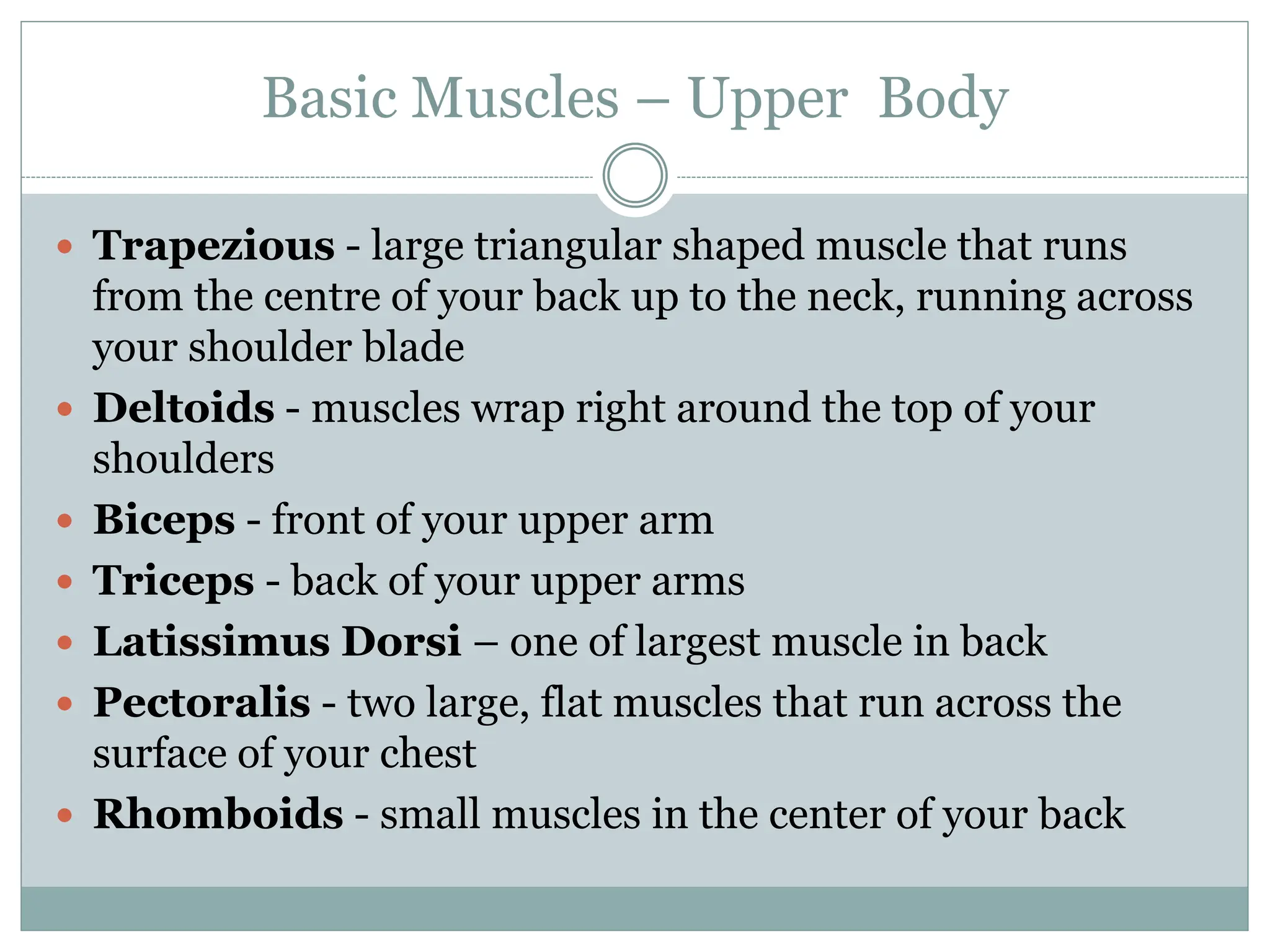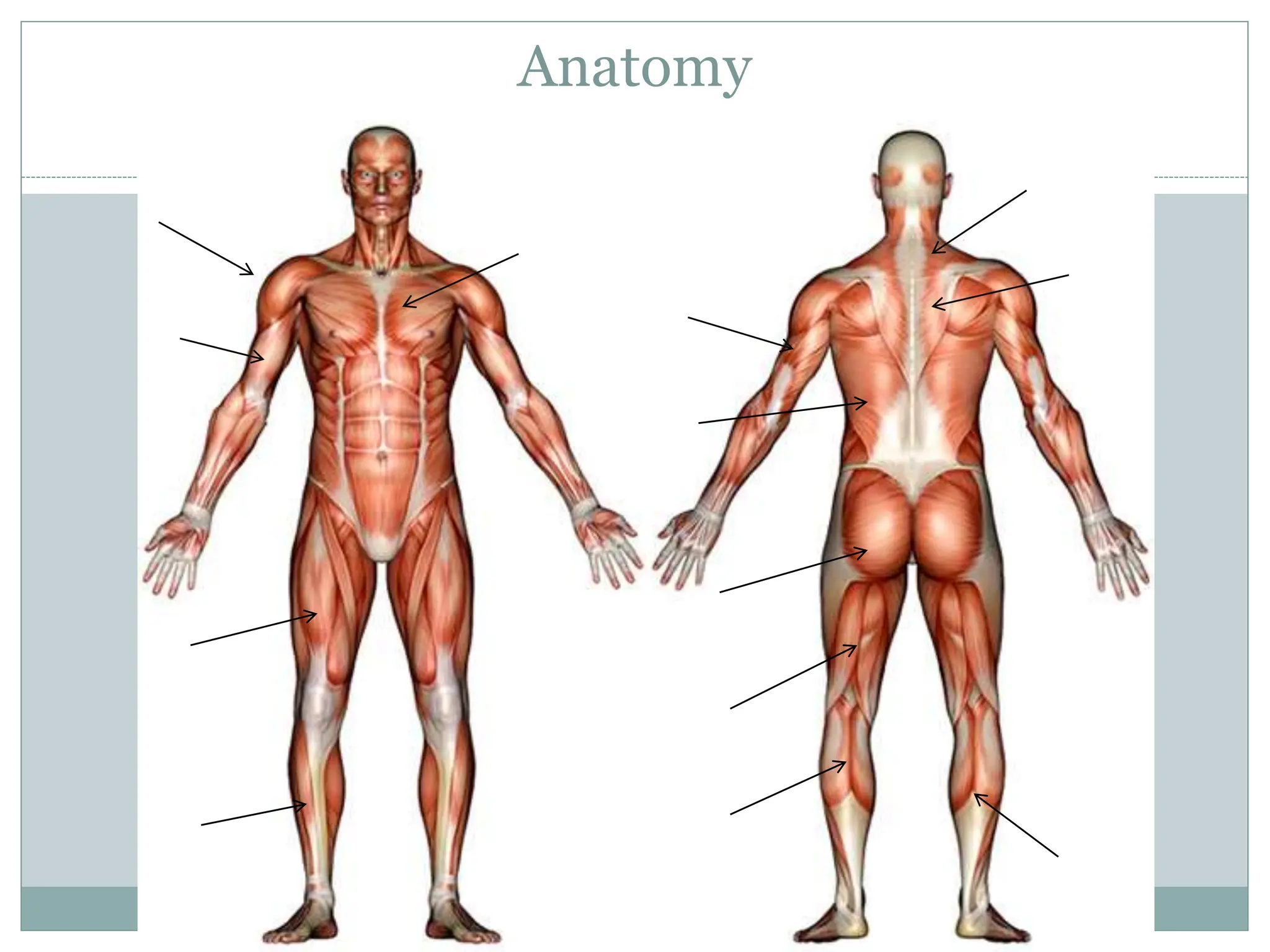This document provides an overview of physical education fundamentals including goal setting, fitness components, safety guidelines, principles of training, anatomy, and more. It recommends 60 minutes of daily moderate to vigorous activity and discusses strategies like group exercise and accountability partners. Key fitness components are defined, such as cardiovascular endurance, flexibility, muscular endurance and strength. Guidelines are provided for warm-ups, cool-downs, stretching, hydration, and injury prevention. Common exercises and their proper form are outlined. A variety of lifetime sports are also listed.




